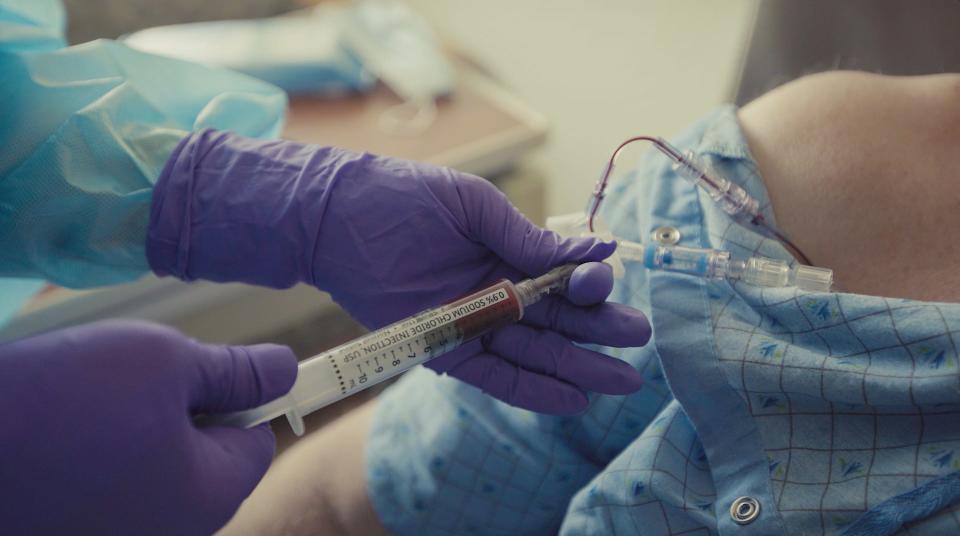COVID-19 case rates are rising again in Utah. Here is what healthcare leaders think that means
Utah is again seeing a surge in new cases of COVID-19, with state healthcare officials attributing the rise to the BA.2 "stealth" variant.
Hospitalization rates remain low, however, and health officials say they are still analyzing the potential impacts moving forward.
“Forecasting is always a slippery slope," Dr. Brandon Webb, an infectious disease specialist with Intermountain Healthcare, said in a press conference on Thursday. "You know, the best we can do in terms of forecasting is (looking at) the way the virus has behaved in the past in similar situations.”
The state counted 3,385 new cases over the seven-day period that ended Sunday, up about 5% from the previous week and up sharply over the past month, with the state having counted only about 600 new cases per week in early April.
The BA.2 variant was first detected early this year and spread quickly across the U.S. It is considered by the World Health Organization as a "sublineage" of the highly transmissible omicron variant. It's a different version of omicron than BA.1, which was responsible for the surge that hit the Northeast late last year.

Studies have shown that BA.2 is "inherently more transmissible" than omicron BA.1, but it has not appeared to cause severe illness as much as omicron BA.1, which prompted a rapid surge in cases, hospitalizations and deaths for about a month before plummeting just as quickly.
Intermountain Healthcare facilities are seeing similar patterns with the new variant, with fewer hospitalizations in comparison to overall cases. However, the large number of new cases has resulted in some stress on area hospitals, and Webb said Thursday that he expects those numbers to only increase.
One issue is the inaccuracy of the current covid case numbers. There is no easy way to track them and at this point many people are doing at-home testing, especially with children, Webb said.
“It's actually kind of hard to track these rates because most parents are testing their children with home tests," said Dr. Andrew Pavia, director of epidemiology at Intermountain Healthcare Primary Children's Hospital. "And so they're not showing up in the numbers. But the test positivity for children has also increased, probably fivefold over where it was at its lowest in early April. We’re getting more and more calls about sick children."
The good news is that there has not been a substantial increase in children's hospitalizations, which could be due to vaccinations and some herd immunity.
“What's become very clear that as the virus has changed over time, and as immunity has waned from the first two doses of vaccines, that really effective vaccination for all age groups will require three doses, and it's really a major step forward," Pavia said.
Children ages five to 11 are now eligible for a third dose of the vaccine, and they remain available for older adolescents and adults.
Intermountain Healthcare has switched to “endemic” mode of responding to COVID-19, as officials say they believe the virus is here to stay. The rates will ebb and flow during certain periods but state leaders have said they do not plan on mask requirements or lockdowns or other responses any time in the near future.
Vaccination is still the greatest protection against covid and leads to the ultimate goal of societal immunity, doctors said on Thursday.
"The way we navigate Covid going forward needs to be intentional," Webb said. "It needs to have a strategy that matches an environment, where we need to be able to flex and use the tools that we do have."
Vaccination data at this point is "robust," and suggests they provide real help for both individuals and the larger community, Webb added.
"We really need to just continue to move toward a model as a community where although we're tired of covid, we're not putting our heads in the sand,” he said.
To learn about the latest Utah Covid case numbers visit www.coronavirus.utah.gov.
Elle Cabrera covers breaking news and topics. Please help us to continue producing this content at thespectrum.com/subscribe.
This article originally appeared on St. George Spectrum & Daily News: 'Although we're tired of Covid, we're not putting our heads in the sand',

